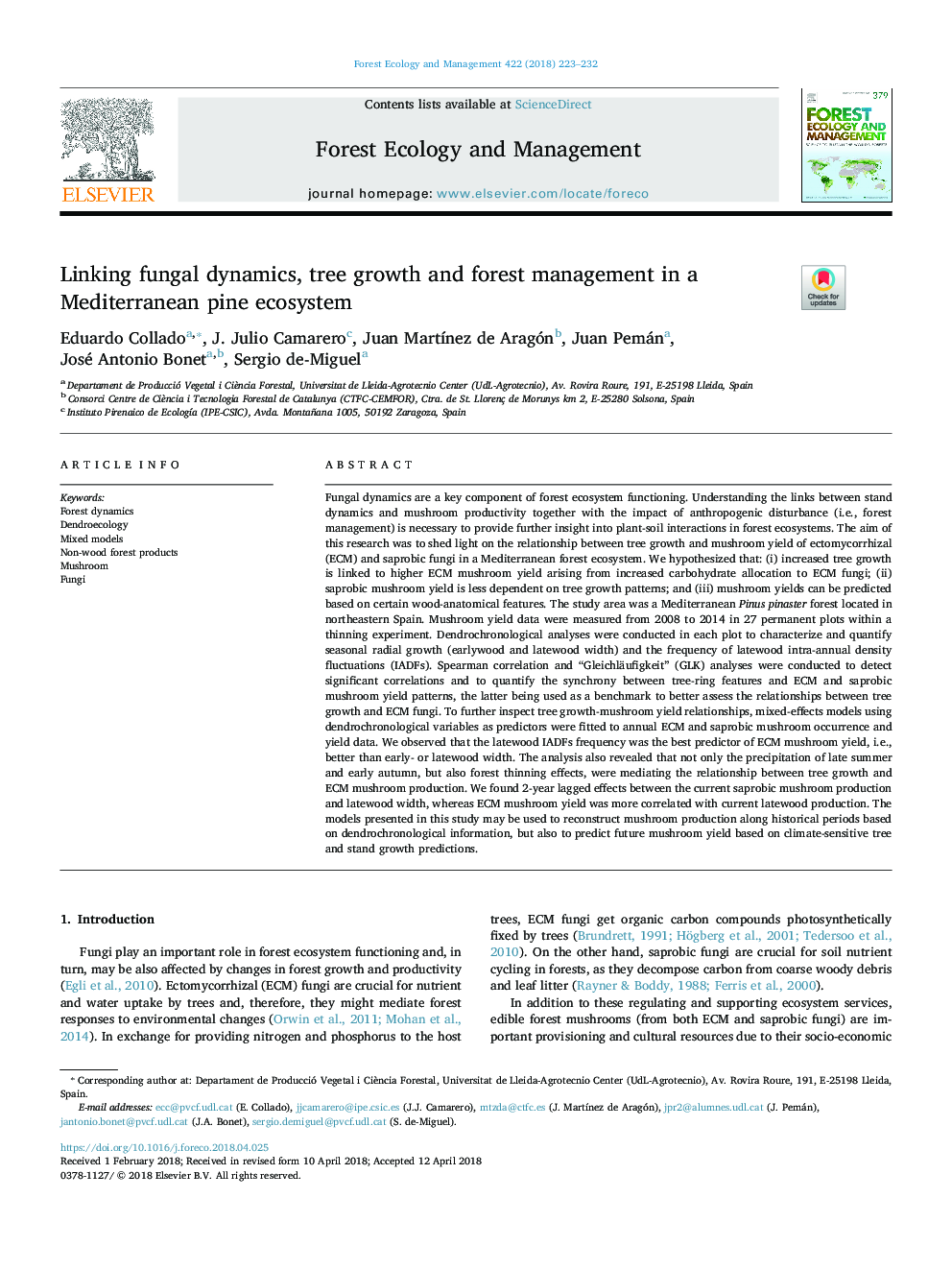| کد مقاله | کد نشریه | سال انتشار | مقاله انگلیسی | نسخه تمام متن |
|---|---|---|---|---|
| 6541668 | 1421338 | 2018 | 10 صفحه PDF | دانلود رایگان |
عنوان انگلیسی مقاله ISI
Linking fungal dynamics, tree growth and forest management in a Mediterranean pine ecosystem
ترجمه فارسی عنوان
پیوند پویایی قارچ، رشد درخت و مدیریت جنگل در اکوسیستم کاج مدیترانه
دانلود مقاله + سفارش ترجمه
دانلود مقاله ISI انگلیسی
رایگان برای ایرانیان
کلمات کلیدی
دینامیک جنگل، دندروکولوژی، مدل های مختلف محصولات جنگل غیر چوب، قارچ، قارچ،
موضوعات مرتبط
علوم زیستی و بیوفناوری
علوم کشاورزی و بیولوژیک
بوم شناسی، تکامل، رفتار و سامانه شناسی
چکیده انگلیسی
Fungal dynamics are a key component of forest ecosystem functioning. Understanding the links between stand dynamics and mushroom productivity together with the impact of anthropogenic disturbance (i.e., forest management) is necessary to provide further insight into plant-soil interactions in forest ecosystems. The aim of this research was to shed light on the relationship between tree growth and mushroom yield of ectomycorrhizal (ECM) and saprobic fungi in a Mediterranean forest ecosystem. We hypothesized that: (i) increased tree growth is linked to higher ECM mushroom yield arising from increased carbohydrate allocation to ECM fungi; (ii) saprobic mushroom yield is less dependent on tree growth patterns; and (iii) mushroom yields can be predicted based on certain wood-anatomical features. The study area was a Mediterranean Pinus pinaster forest located in northeastern Spain. Mushroom yield data were measured from 2008 to 2014 in 27 permanent plots within a thinning experiment. Dendrochronological analyses were conducted in each plot to characterize and quantify seasonal radial growth (earlywood and latewood width) and the frequency of latewood intra-annual density fluctuations (IADFs). Spearman correlation and “Gleichläufigkeit” (GLK) analyses were conducted to detect significant correlations and to quantify the synchrony between tree-ring features and ECM and saprobic mushroom yield patterns, the latter being used as a benchmark to better assess the relationships between tree growth and ECM fungi. To further inspect tree growth-mushroom yield relationships, mixed-effects models using dendrochronological variables as predictors were fitted to annual ECM and saprobic mushroom occurrence and yield data. We observed that the latewood IADFs frequency was the best predictor of ECM mushroom yield, i.e., better than early- or latewood width. The analysis also revealed that not only the precipitation of late summer and early autumn, but also forest thinning effects, were mediating the relationship between tree growth and ECM mushroom production. We found 2-year lagged effects between the current saprobic mushroom production and latewood width, whereas ECM mushroom yield was more correlated with current latewood production. The models presented in this study may be used to reconstruct mushroom production along historical periods based on dendrochronological information, but also to predict future mushroom yield based on climate-sensitive tree and stand growth predictions.
ناشر
Database: Elsevier - ScienceDirect (ساینس دایرکت)
Journal: Forest Ecology and Management - Volume 422, 15 August 2018, Pages 223-232
Journal: Forest Ecology and Management - Volume 422, 15 August 2018, Pages 223-232
نویسندگان
Eduardo Collado, J. Julio Camarero, Juan MartÃnez de Aragón, Juan Pemán, José Antonio Bonet, Sergio de-Miguel,
